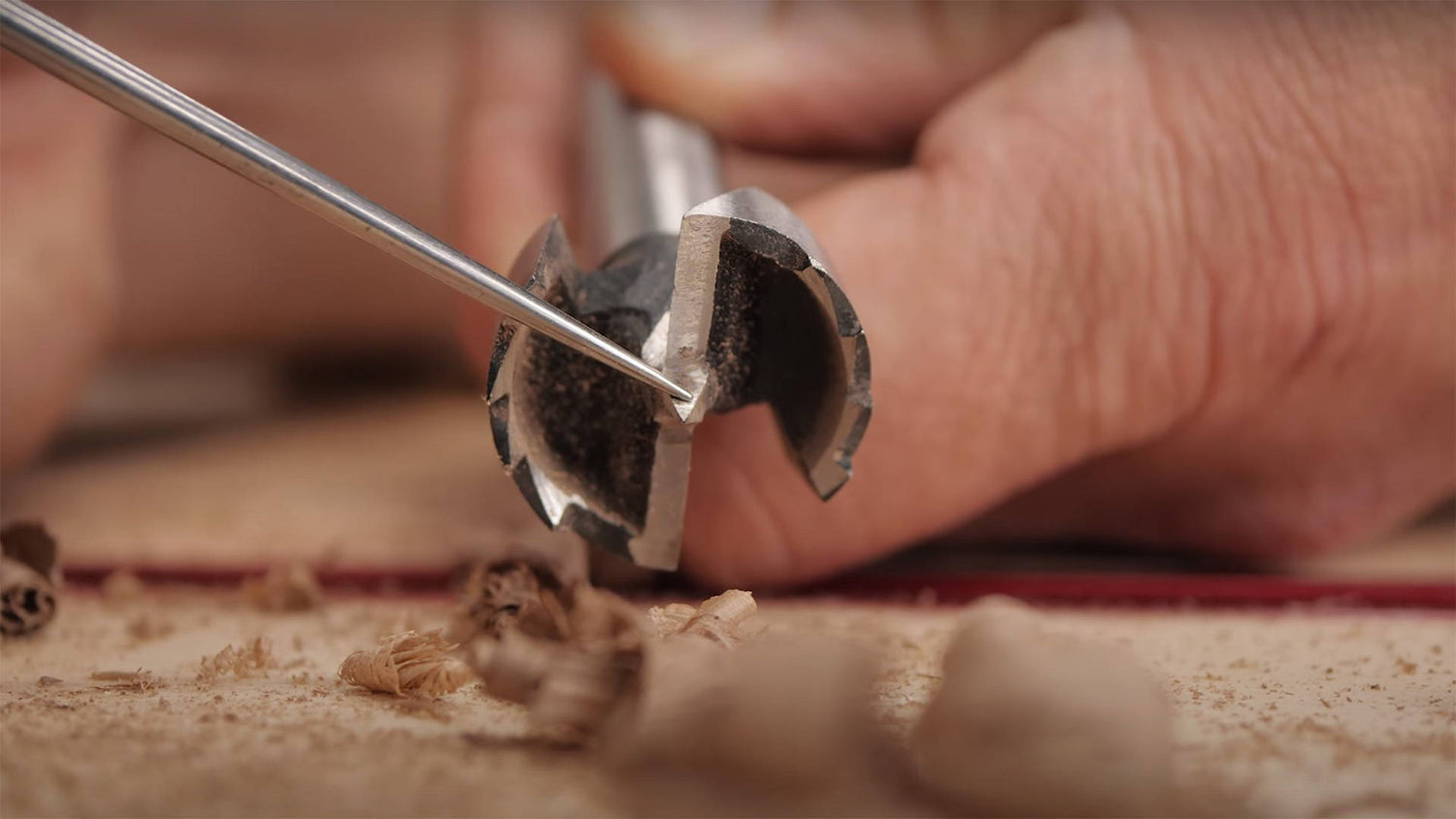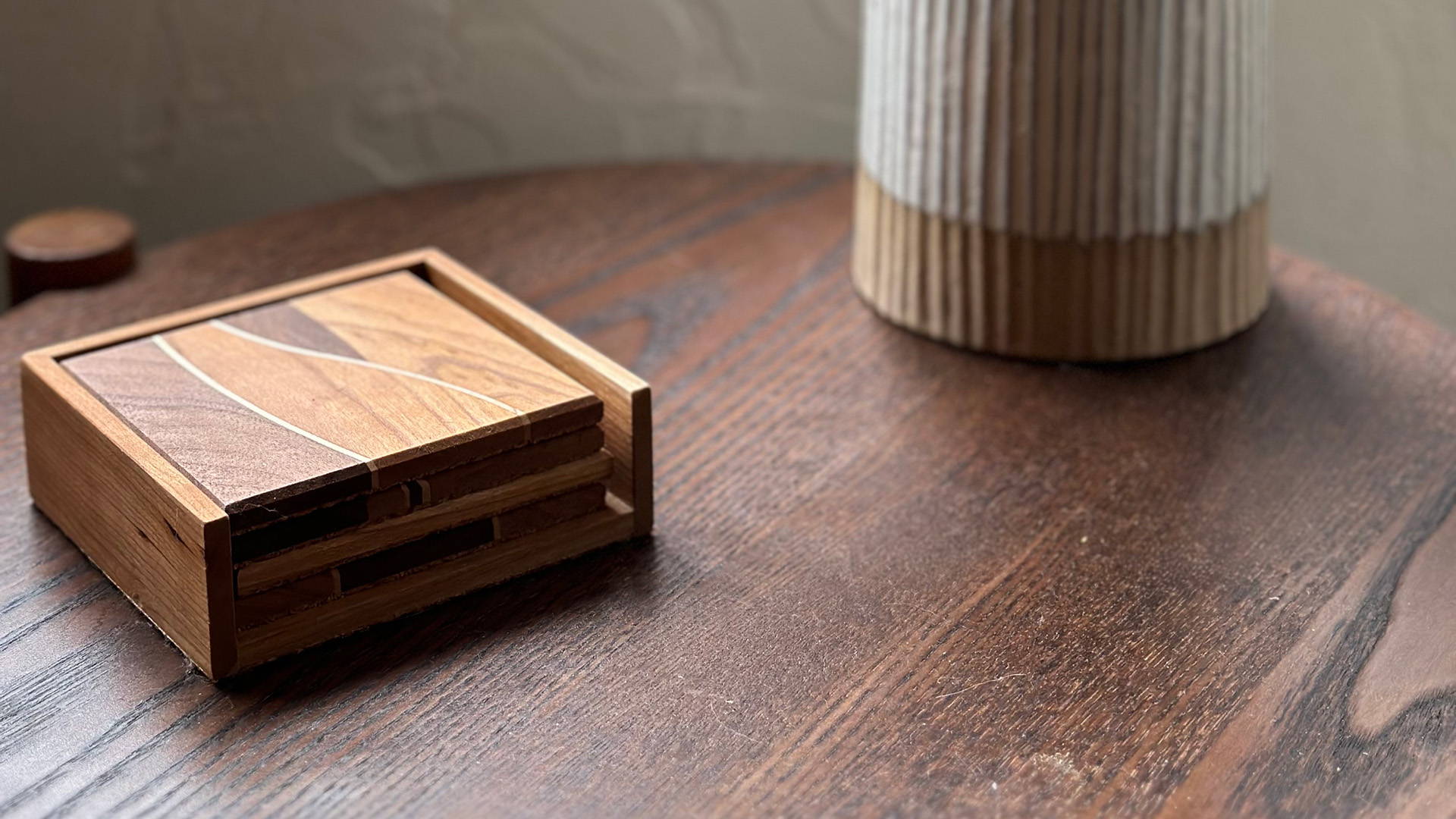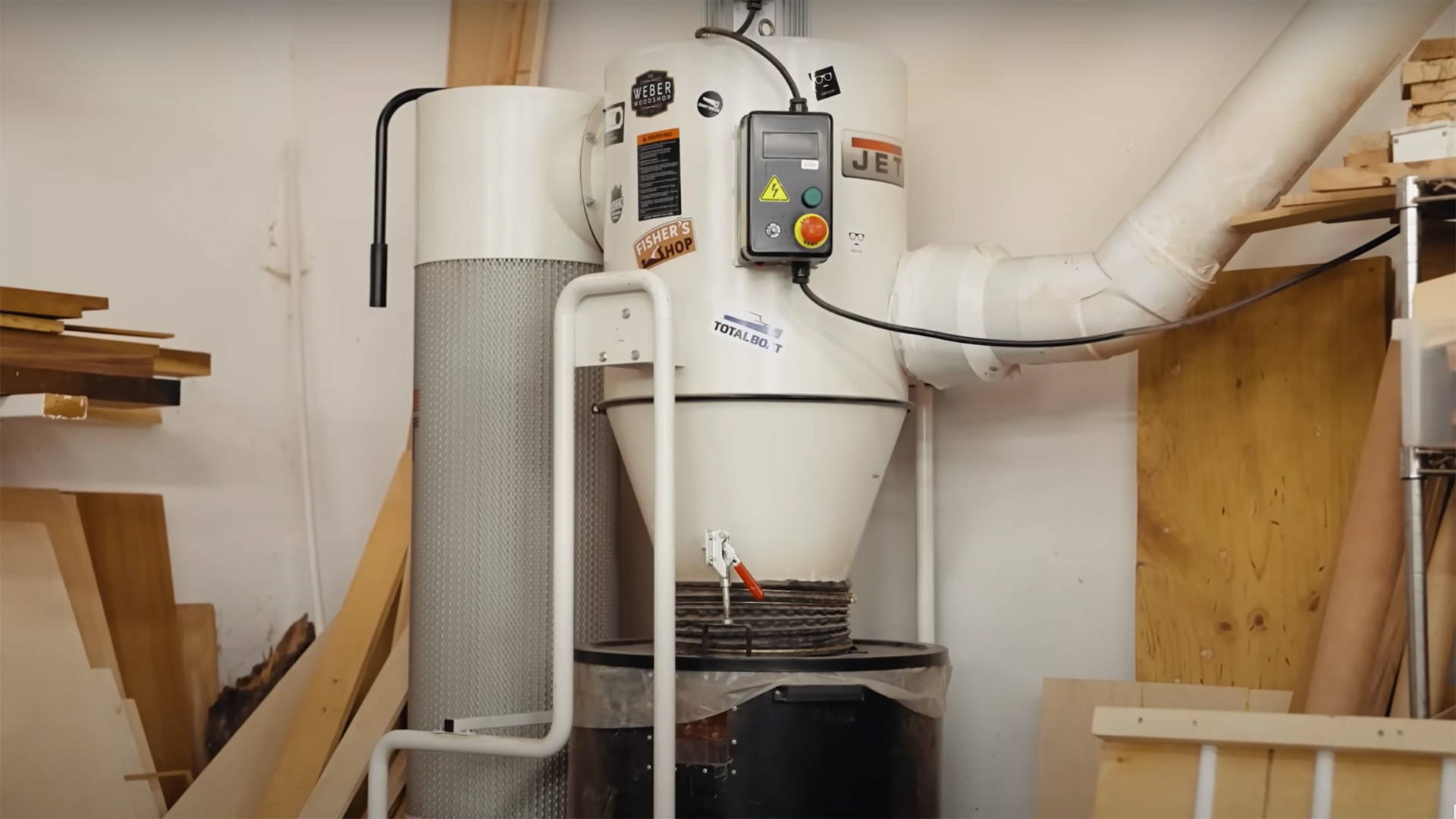Forster bits are my favorite tool for cutting perfect, ultra-crisp holes.
But if you’re not careful, they will absolutely decimate the exit side of your workpiece with tearout.
Luckily, there’s an easy way to avoid this — and you don’t even need a backer board.
Here’s how:
1. SET THE CUTTING DEPTH
Set the depth setting on your drill press so only the very tip of the forstner bit (spur) will go all the way through your board.
The easiest way to do this is push the bit down until the spur touches your drill press table. Then set the depth stop there.
2. CUT MOST OF THE HOLE
Take multiple small plunges until you hit the depth stop.
When you flip your board over, you should see a small hole where the spur poked through the opposite face.
(If you don’t set the depth stop to cut a little deeper and try again).
3. DRILL FROM THE OPPOSITE SIDE
Use the small spur hole as a guide for centering the forstner bit (it’ll self-center once you turn on the drill press).
Now plunge the bit and cut out the last bit of material.
This process gives you a clean-edged hole on both sides of your workpiece — meaning you don’t have to worry about show faces.
Looking for some new bits? Check out the CMT Forstner bits we carry in 16-piece sets, 4-piece sets, or individually.
Want to learn all the weird uses for forstner bits? Read this.
How do you stop forstner bit tearout? Let us know in the comments below!
Follow us on Instagram @katzmosestools, on TikTok @katzmoseswoodworking, and check out my YouTube channel for more great woodworking content...
And as always, STAY SAFE IN THE SHOP!











3 comments
David
I plunge the forstner bit partially through the piece, then I use a small drill bit to drill the rest of the way through using the hole left by the forstner bit tip as a guide then I flip the piece and finish with the forstner bit.
I plunge the forstner bit partially through the piece, then I use a small drill bit to drill the rest of the way through using the hole left by the forstner bit tip as a guide then I flip the piece and finish with the forstner bit.
Anonymous
Another great tip thanks for making me a better woodworker
Another great tip thanks for making me a better woodworker
kevin winsor
When I use large forstner bits I’ll pre-drill a a small pilot hole first. When using a large bit on end grain and very hard wood the pilot hole makes it easier to push the large spur into the workpiece.
When I use large forstner bits I’ll pre-drill a a small pilot hole first. When using a large bit on end grain and very hard wood the pilot hole makes it easier to push the large spur into the workpiece.